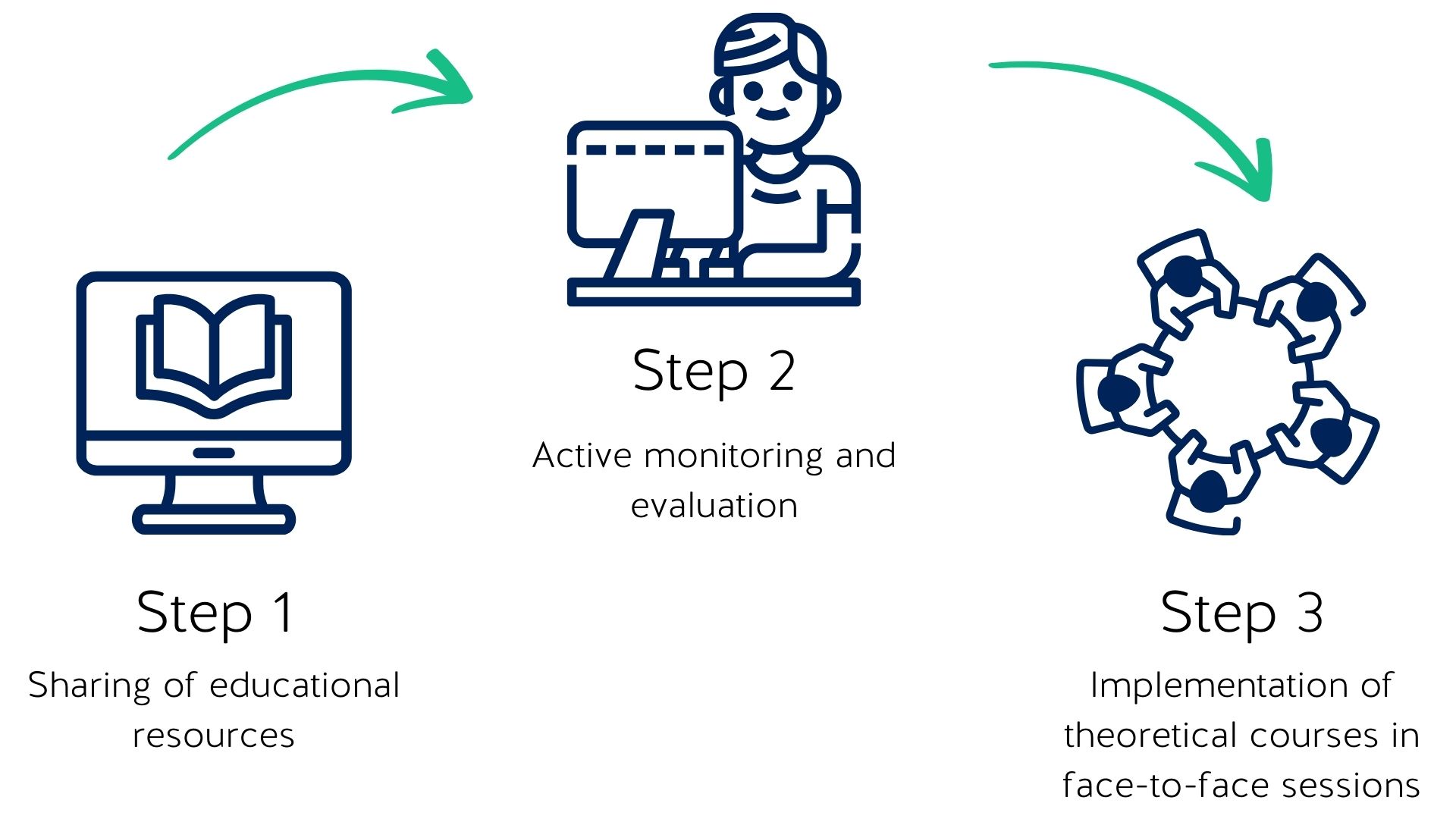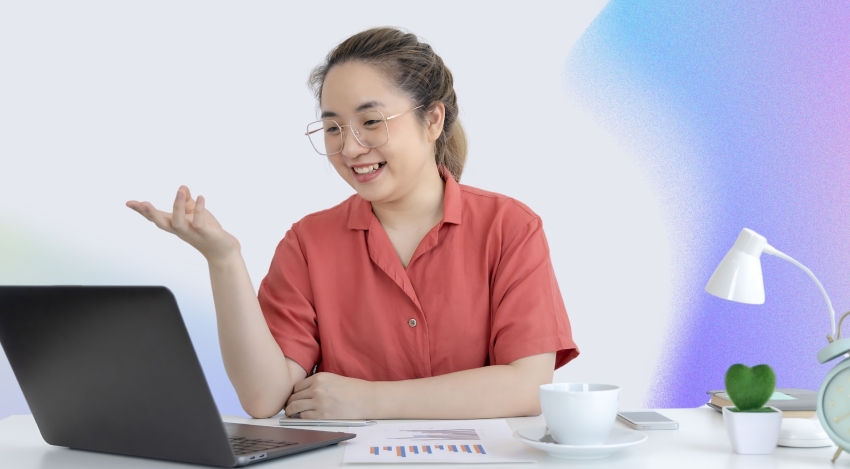

A flipped classroom is an educational model that aims to optimize students' skill development. The concept is simple: learners receive lessons from teachers in the form of online resources (often digital videos) that they can watch at home instead of doing homework. Thus, class time is primarily dedicated to practical workshops, activities, exercises, or group projects. However, there are several variations, and there is no fixed model for this method. It must suit the needs of each learner..jpg)
Source of the diagram : academy of Grenoble
The flipped classroom has its roots in the experiments of Jon Bergman and Aaron Sams, two American science teachers, in the 2000s. Their idea was to move knowledge acquisition outside the classroom through educational videos. This way, classroom time is freed up for interactive activities. This innovative concept quickly gained popularity and transformed numerous educational practices worldwide.
The flipped classroom offers several advantages for education, particularly increased freedom and flexibility. It allows learners to improve their autonomy by taking responsibility for their learning. Consequently, they develop organizational and time management skills. Additionally, the flipped classroom promotes engagement and investment in their progress. Finally, it enhances collaboration among learners, enabling them to better understand and learn.
Technologies play a crucial role in the effective implementation of the flipped classroom. Video resources allow teachers to present concepts dynamically and engagingly. Today, there are simple solutions that enable teachers to create course capsules without any particular audiovisual skills.
Moreover, several interactive tools (such as online quizzes, self-assessment quizzes, surveys, etc.) are used to evaluate pre-class learning, allowing teachers to adapt their lessons based on students' specific needs.
LMS: Teachers share all necessary resources for the flipped classroom (videos, diagrams, readings, etc.).
Creation of Educational Resources: Tools like Genially, H5P, or Canva allow for the creation of presentations and educational videos.
Video Platforms: Videos are published on various platforms such as YouTube (free version), Vimeo (paid version), or POD (if available in the institution). They are then integrated into the LMS so that students can access them.
Active Monitoring and Evaluation: Using tools like Google Forms, Kahoot or Quizizz, teachers can create questionnaires, evaluate students, or conduct surveys to optimize in-person time and focus on the most complex concepts.
As mentioned earlier, there is no fixed method, but it does require careful planning. Here is a concrete example of a flipped classroom:
Before the In-person Class: The teacher provides students with video capsules that present theoretical lessons. They can use already existing capsules (paying attention to copyright and other rules) or produce their own educational capsules by either creating mini-videos on specific concepts or filming their lectures for later use in flipped classes.
Before the In-person Class: Students watch 5-10 minute videos and then respond to online questionnaires or activities to test what they have retained. There are several software options for creating quizzes like Kahoot!, Google Forms, or Quizizz, which are simple to use. Students can rewatch the capsules as many times as necessary to better understand.
During the In-person Class: The teacher organizes activities, exercises, or group work to apply the theoretical lessons previously covered. This way, the teacher can clarify course concepts and monitor learners' progress in person.
Feedback from teachers and students' results demonstrate the effectiveness of the flipped classroom. Case studies highlight the benefits of this approach in different educational contexts. Here are some testimonials about adopting the "flipped classroom" method:
Marie Soulier, a pioneer in France, shares her experience with flipped classrooms. The key takeaway from her article is the use of short and precise video capsules.
Marcel Lebrun, a university professor in science, recounts his experience with flipped classrooms. He co-authored a book with Julie Lecoq titled "Classes inversées : enseigner et apprendre à l'endroit" published by Canopé.
On the "Classe inversée" website, you can find various testimonials from teachers across different educational levels (middle schools, high schools, universities) regarding the flipped classroom pedagogical model.
Blandine Hombourger, a classical literature teacher, shares her experience with flipped classrooms, emphasizing her own implementation of the method.
In conclusion, the flipped classroom represents a significant evolution of traditional teaching and offers numerous advantages in terms of learner autonomy, engagement, collaboration, and skill mastery. As this approach continues to gain popularity, it is essential to adapt to new learning modalities and implement innovative pedagogical practices. In this context, other pedagogical methods deserve exploration, such as active pedagogy, particularly suitable for remote teaching, or explicit teaching.
To deepen your understanding of the flipped classroom method, we recommend consulting the Eduscol document and the book "La classe inversée : une pédagogie essentielle en 2023" by Frédéric Mouriaux and Didier Paquelinuriaux.
Happy reading.

